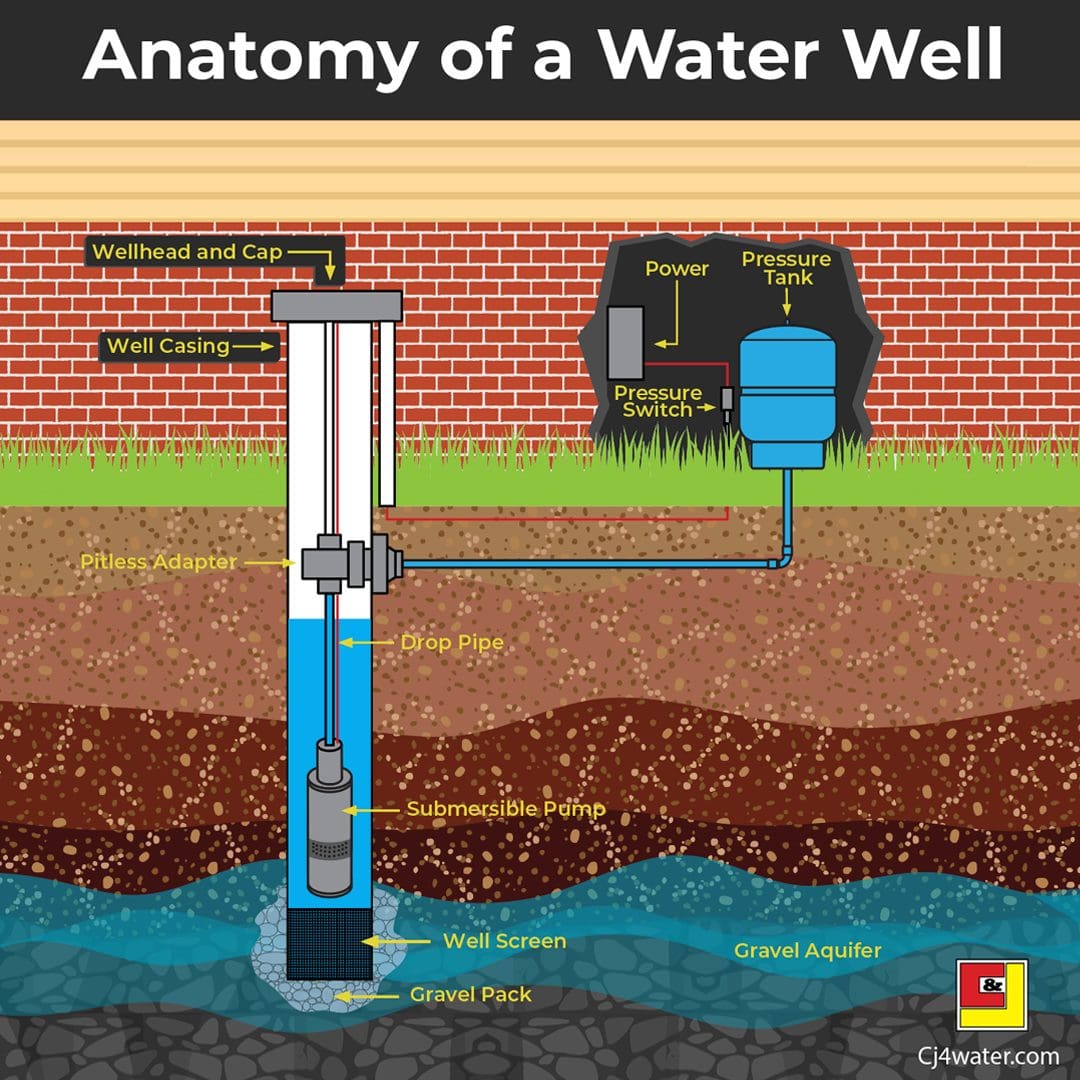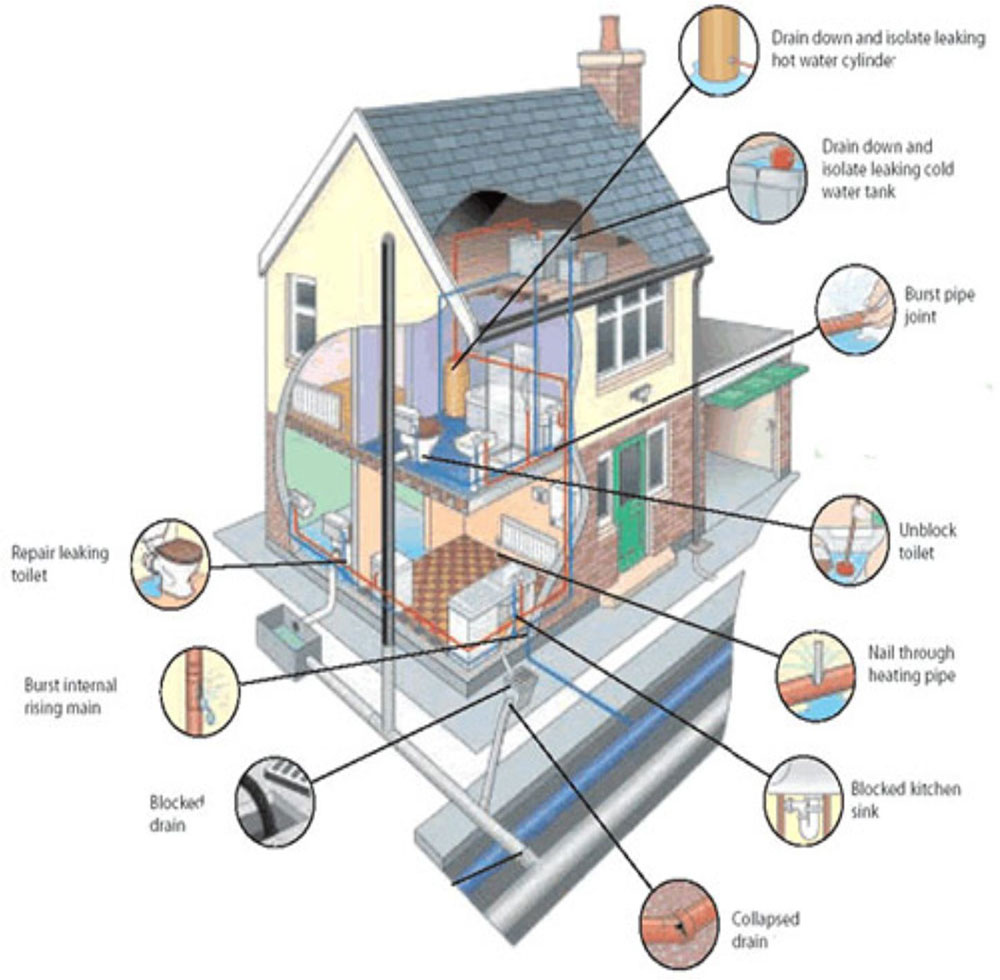Are you searching for content involving Understanding Your Home's Plumbing Anatomy?

Comprehending just how your home's plumbing system works is crucial for every single house owner. From providing clean water for alcohol consumption, cooking, and showering to safely getting rid of wastewater, a properly maintained plumbing system is crucial for your family's health and wellness and convenience. In this detailed guide, we'll check out the elaborate network that makes up your home's pipes and deal ideas on maintenance, upgrades, and dealing with usual problems.
Intro
Your home's plumbing system is more than just a network of pipelines; it's a complicated system that ensures you have accessibility to tidy water and effective wastewater removal. Knowing its elements and how they collaborate can assist you avoid costly fixings and guarantee every little thing runs smoothly.
Fundamental Parts of a Plumbing System
Pipelines and Tubes
At the heart of your plumbing system are the pipelines and tubes that carry water throughout your home. These can be made of various products such as copper, PVC, or PEX, each with its advantages in regards to durability and cost-effectiveness.
Fixtures: Sinks, Toilets, Showers, and so on.
Fixtures like sinks, toilets, showers, and bath tubs are where water is utilized in your home. Recognizing exactly how these fixtures attach to the plumbing system helps in identifying troubles and preparing upgrades.
Shutoffs and Shut-off Points
Valves regulate the circulation of water in your plumbing system. Shut-off shutoffs are essential throughout emergency situations or when you require to make repair work, allowing you to separate parts of the system without disrupting water circulation to the whole home.
Water Supply System
Key Water Line
The main water line links your home to the municipal water supply or a personal well. It's where water enters your home and is distributed to different components.
Water Meter and Pressure Regulatory Authority
The water meter actions your water usage, while a stress regulator makes certain that water moves at a risk-free stress throughout your home's pipes system, avoiding damages to pipelines and fixtures.
Cold Water vs. Warm water Lines
Understanding the difference in between cold water lines, which supply water straight from the main, and warm water lines, which lug heated water from the hot water heater, helps in fixing and preparing for upgrades.
Drainage System
Drain Pipes Pipes and Traps
Drain pipelines bring wastewater far from sinks, showers, and toilets to the drain or septic system. Traps avoid sewer gases from entering your home and likewise catch debris that might create clogs.
Ventilation Pipes
Air flow pipelines allow air right into the water drainage system, protecting against suction that might slow water drainage and trigger traps to vacant. Appropriate air flow is important for preserving the honesty of your plumbing system.
Value of Correct Water Drainage
Making sure proper drainage protects against back-ups and water damages. Regularly cleansing drains pipes and preserving traps can avoid expensive repair work and prolong the life of your plumbing system.
Water Heating Unit
Types of Water Heaters
Hot water heater can be tankless or typical tank-style. Tankless heating units warmth water on demand, while tanks store warmed water for instant usage.
Just How Water Heaters Attach to the Pipes System
Recognizing just how hot water heater link to both the cold water supply and warm water distribution lines assists in detecting problems like insufficient warm water or leaks.
Maintenance Tips for Water Heaters
Regularly purging your water heater to remove debris, inspecting the temperature setups, and checking for leaks can expand its life-span and improve energy efficiency.
Usual Plumbing Issues
Leakages and Their Reasons
Leaks can occur because of aging pipes, loose installations, or high water stress. Dealing with leakages immediately prevents water damage and mold growth.
Blockages and Clogs
Blockages in drains and commodes are typically brought on by flushing non-flushable items or a build-up of grease and hair. Making use of drainpipe screens and bearing in mind what decreases your drains pipes can protect against blockages.
Indicators of Plumbing Troubles to Look For
Low water stress, slow drains pipes, foul odors, or unusually high water costs are signs of possible plumbing issues that must be dealt with promptly.
Pipes Maintenance Tips
Normal Assessments and Checks
Schedule annual plumbing inspections to capture issues early. Try to find signs of leakages, rust, or mineral build-up in faucets and showerheads.
DIY Maintenance Tasks
Straightforward tasks like cleansing faucet aerators, looking for bathroom leaks making use of dye tablet computers, or insulating revealed pipes in chilly climates can protect against significant pipes problems.
When to Call a Specialist Plumbing Technician
Know when a pipes problem requires expert knowledge. Trying complex repair work without correct understanding can bring about more damages and higher repair costs.
Upgrading Your Pipes System
Reasons for Updating
Updating to water-efficient fixtures or replacing old pipelines can enhance water top quality, decrease water costs, and increase the worth of your home.
Modern Plumbing Technologies and Their Benefits
Discover technologies like clever leakage detectors, water-saving toilets, and energy-efficient hot water heater that can conserve money and minimize environmental effect.
Price Considerations and ROI
Determine the ahead of time costs versus long-lasting cost savings when thinking about pipes upgrades. Many upgrades spend for themselves with reduced utility expenses and less repairs.
Environmental Influence and Conservation
Water-Saving Fixtures and Home Appliances
Setting up low-flow taps, showerheads, and toilets can substantially lower water usage without giving up efficiency.
Tips for Reducing Water Usage
Basic routines like dealing with leakages promptly, taking shorter showers, and running full tons of laundry and meals can preserve water and reduced your energy costs.
Eco-Friendly Pipes Options
Consider sustainable plumbing products like bamboo for floor covering, which is durable and eco-friendly, or recycled glass for counter tops.
Emergency Readiness
Actions to Take Throughout a Pipes Emergency situation
Know where your shut-off shutoffs lie and just how to switch off the water supply in case of a ruptured pipeline or significant leak.
Significance of Having Emergency Situation Get In Touches With Convenient
Maintain get in touch with info for regional plumbings or emergency situation solutions conveniently offered for fast action throughout a pipes dilemma.
Do It Yourself Emergency Fixes (When Relevant).
Short-lived repairs like utilizing duct tape to patch a dripping pipeline or positioning a pail under a trickling tap can lessen damages till an expert plumbing technician arrives.
Conclusion.
Understanding the composition of your home's plumbing system empowers you to maintain it properly, conserving money and time on repairs. By following normal upkeep regimens and staying informed about modern-day pipes innovations, you can ensure your pipes system operates successfully for many years to come.
HOW YOUR PLUMBING SYSTEM WORKS
Which Pipes Do What?
Blue lines = fresh water supply entering the building
Red lines = hot water supply entering the building
Grey lines = pipes carrying waste away from the building and venting pipes carrying gases away from the building (through the roof)
YOUR MAIN PLUMBING SYSTEMS
There are two main plumbing systems that support your home s basic plumbing needs one that brings clean water into your home, and one that sends dirty water away from your home. Connected to the toilet, bath, shower, and other faucets in your home, these two systems keep your water flowing in the right directions.
ACCESSING FRESH WATER
Fresh and clean water is brought into your home through the main water supply line . Filtered through one pipe, this water is pressured to flow into the various fixtures in your home at any given time.
This water can be sourced from a well located on your property, a pond or river (mostly cottages), or, as in most cases, from the city s municipal water treatment centre. However, it is important to note that water that is untreated, such as the water siphoned from ponds or rivers, may not be safe to drink. Personal water supplies always need to be treated for hardness and contaminants before consumed.
MUNICIPAL WATER SUPPLIES
Improve taste and odour
Remove sediment
Eliminate hardness
Reduce chlorine
COLD WATER SUPPLY VS. HOT WATER SUPPLY
Cold water flows into your home or building through the service line, which then distributes hot or cold water to your fixtures. This line is most commonly run through a central column that runs floor to floor. Hot water runs in short and straight pipes as the longer the pipeline, the more heat that will be lost in the transfer. Having shorter pipes also allows residents to access hot water more quickly.
WASTE WATER SYSTEM
Your wastewater system is divided into two parts pipes that send wastewater away from your home and venting pipes that send sewer gas away from your home. Sewage water travels through pipes that flush the water and waste towards local sewers that are operated and managed by your city or town. Most sewer systems rely on gravity to move the wastewater to where it needs to go.
The further away from your toilet or sink, the larger wastewater pipes become. This allows for waste to be disposed of from various parts of your home or business at once without pipe blockages. The angle and flow of these pipes are also essential for keeping your waste pipes clear of build up.
https://harrisplumbing.ca/how-your-home-plumbing-system-works/

HOW YOUR PLUMBING SYSTEM WORKS
Which Pipes Do What?
YOUR MAIN PLUMBING SYSTEMS
There are two main plumbing systems that support your home s basic plumbing needs one that brings clean water into your home, and one that sends dirty water away from your home. Connected to the toilet, bath, shower, and other faucets in your home, these two systems keep your water flowing in the right directions.
ACCESSING FRESH WATER
Fresh and clean water is brought into your home through the main water supply line . Filtered through one pipe, this water is pressured to flow into the various fixtures in your home at any given time.
This water can be sourced from a well located on your property, a pond or river (mostly cottages), or, as in most cases, from the city s municipal water treatment centre. However, it is important to note that water that is untreated, such as the water siphoned from ponds or rivers, may not be safe to drink. Personal water supplies always need to be treated for hardness and contaminants before consumed.
MUNICIPAL WATER SUPPLIES
COLD WATER SUPPLY VS. HOT WATER SUPPLY
Cold water flows into your home or building through the service line, which then distributes hot or cold water to your fixtures. This line is most commonly run through a central column that runs floor to floor. Hot water runs in short and straight pipes as the longer the pipeline, the more heat that will be lost in the transfer. Having shorter pipes also allows residents to access hot water more quickly.
WASTE WATER SYSTEM
Your wastewater system is divided into two parts pipes that send wastewater away from your home and venting pipes that send sewer gas away from your home. Sewage water travels through pipes that flush the water and waste towards local sewers that are operated and managed by your city or town. Most sewer systems rely on gravity to move the wastewater to where it needs to go.
The further away from your toilet or sink, the larger wastewater pipes become. This allows for waste to be disposed of from various parts of your home or business at once without pipe blockages. The angle and flow of these pipes are also essential for keeping your waste pipes clear of build up.
https://harrisplumbing.ca/how-your-home-plumbing-system-works/
I ran across that piece about Exploring Your Homes Plumbing Anatomy while doing a search on the internet. Enjoyed reading our article? Please quickly share it. Help someone else discover it. Thank-you for taking the time to read it.
Quote